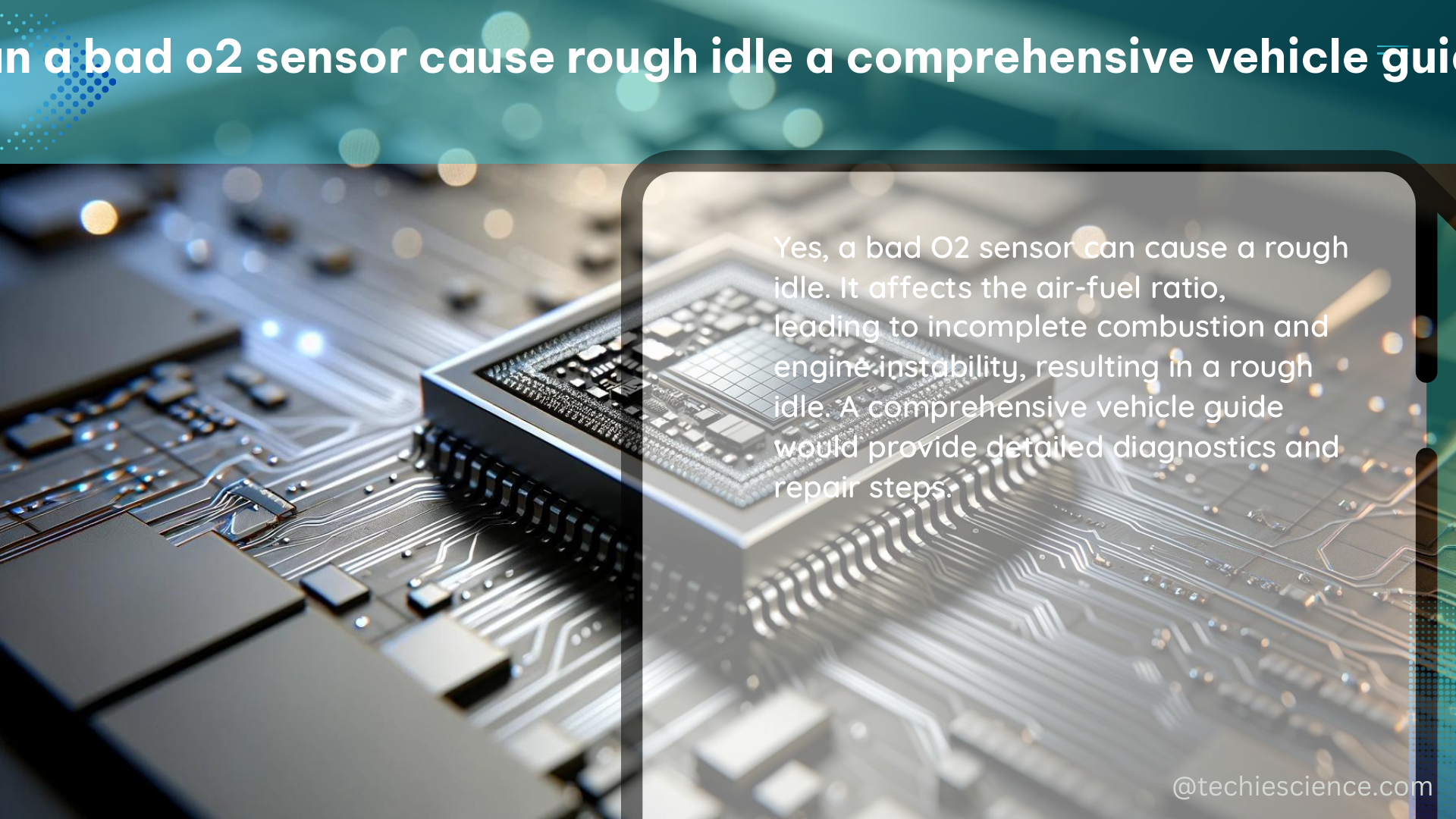A faulty oxygen (O2) sensor can indeed lead to a rough idle in a vehicle, as the engine control module (ECM) struggles to maintain the optimal air-fuel mixture. This comprehensive guide delves into the role of O2 sensors, the impact of a bad O2 sensor on engine performance, and the specific symptoms associated with a malfunctioning O2 sensor, providing a detailed, technical, and hands-on resource for DIY enthusiasts.
Role of O2 Sensors
Oxygen sensors, also known as lambda sensors, are critical components in a vehicle’s exhaust system. They measure the amount of oxygen present in the exhaust gases and relay this information to the ECM or powertrain control module (PCM). The ECM/PCM then uses this data to adjust the air-fuel mixture, ensuring optimal combustion and efficient engine operation.
Typically, a vehicle will have multiple O2 sensors, with one or more located upstream (before) the catalytic converter and one or more downstream (after) the catalytic converter. The upstream sensors provide real-time feedback to the ECM/PCM, allowing for immediate adjustments to the air-fuel ratio, while the downstream sensors monitor the catalytic converter’s efficiency.
Impact of a Bad O2 Sensor on Engine Performance

When an O2 sensor fails or becomes faulty, it can no longer accurately measure the oxygen content in the exhaust. This can lead to an improper air-fuel mixture, causing the engine to run either rich (too much fuel) or lean (too little fuel).
A rich air-fuel mixture can result in the following issues:
– Rough idle
– Decreased fuel efficiency (typically 1-2 mpg reduction)
– Increased emissions, particularly higher levels of hydrocarbons (HC) and carbon monoxide (CO)
– Potential damage to the catalytic converter due to overheating
Conversely, a lean air-fuel mixture can cause:
– Rough idle
– Hesitation or stumbling during acceleration
– Misfiring, which can further damage the catalytic converter
– Reduced power and performance
Symptoms of a Bad O2 Sensor
-
Rough Idle: A faulty O2 sensor can cause the engine to idle roughly, as the ECM/PCM struggles to maintain the correct air-fuel mixture. This can be particularly noticeable when the engine is warm or under load.
-
Check Engine Light: While not always present, a malfunctioning O2 sensor will often trigger a check engine light, accompanied by specific trouble codes related to the O2 sensor, such as P0131 (O2 sensor circuit low voltage) or P0132 (O2 sensor circuit high voltage).
-
Reduced Fuel Efficiency: A rich or lean air-fuel mixture can lead to increased fuel consumption, resulting in a noticeable decrease in miles per gallon (MPG). Typical fuel economy reductions range from 1-2 MPG.
-
Misfiring: An improper air-fuel mixture can cause the engine to misfire, leading to a loss of power and potential damage to the catalytic converter.
-
Emissions Issues: A faulty O2 sensor can prevent the ECM/PCM from properly adjusting the air-fuel mixture, resulting in higher levels of harmful emissions, such as hydrocarbons (HC) and carbon monoxide (CO).
Technical Specifications and DIY Replacement
When replacing a faulty O2 sensor, it’s essential to identify the correct sensor for your vehicle. O2 sensors can vary in terms of thread size, electrical connections, and sensor type (e.g., heated zirconia, thick-film). Consult your vehicle’s service manual or the manufacturer’s recommendations to ensure you purchase the appropriate replacement sensor.
To replace an O2 sensor, you’ll need the following tools:
– O2 sensor socket (typically 7/8″ or 22mm)
– Torque wrench
– Penetrating lubricant (if the sensor is difficult to remove)
When installing the new O2 sensor, follow these steps:
1. Disconnect the electrical connector from the old sensor.
2. Use the O2 sensor socket to loosen and remove the old sensor.
3. Apply anti-seize compound to the threads of the new sensor.
4. Install the new sensor and tighten it to the manufacturer’s recommended torque specification, typically between 20-40 Nm (15-30 ft-lbs).
5. Reconnect the electrical connector and ensure a secure connection.
6. Clear any diagnostic trouble codes and test the vehicle’s operation.
Remember to always follow the manufacturer’s instructions and safety guidelines when working on your vehicle. If you’re unsure about any aspect of the repair, it’s best to consult a professional mechanic.
References
- M3POST Forum – Could a Bad Oxygen Sensor Cause a Rough Idle?
- ThirdGen.org Forum – Could a Bad Oxygen Sensor Cause a Rough Idle?
- LS1Tech Forum – Rough Idle and Slow O2 Sensors
- r/CherokeeXJ Reddit – Would a Bad Downstream Oxygen Sensor Cause a Rough Idle?
- Just Commodores Forum – Oxy Sensors Cause Rough Idle

The lambdageeks.com Core SME Team is a group of experienced subject matter experts from diverse scientific and technical fields including Physics, Chemistry, Technology,Electronics & Electrical Engineering, Automotive, Mechanical Engineering. Our team collaborates to create high-quality, well-researched articles on a wide range of science and technology topics for the lambdageeks.com website.
All Our Senior SME are having more than 7 Years of experience in the respective fields . They are either Working Industry Professionals or assocaited With different Universities. Refer Our Authors Page to get to know About our Core SMEs.